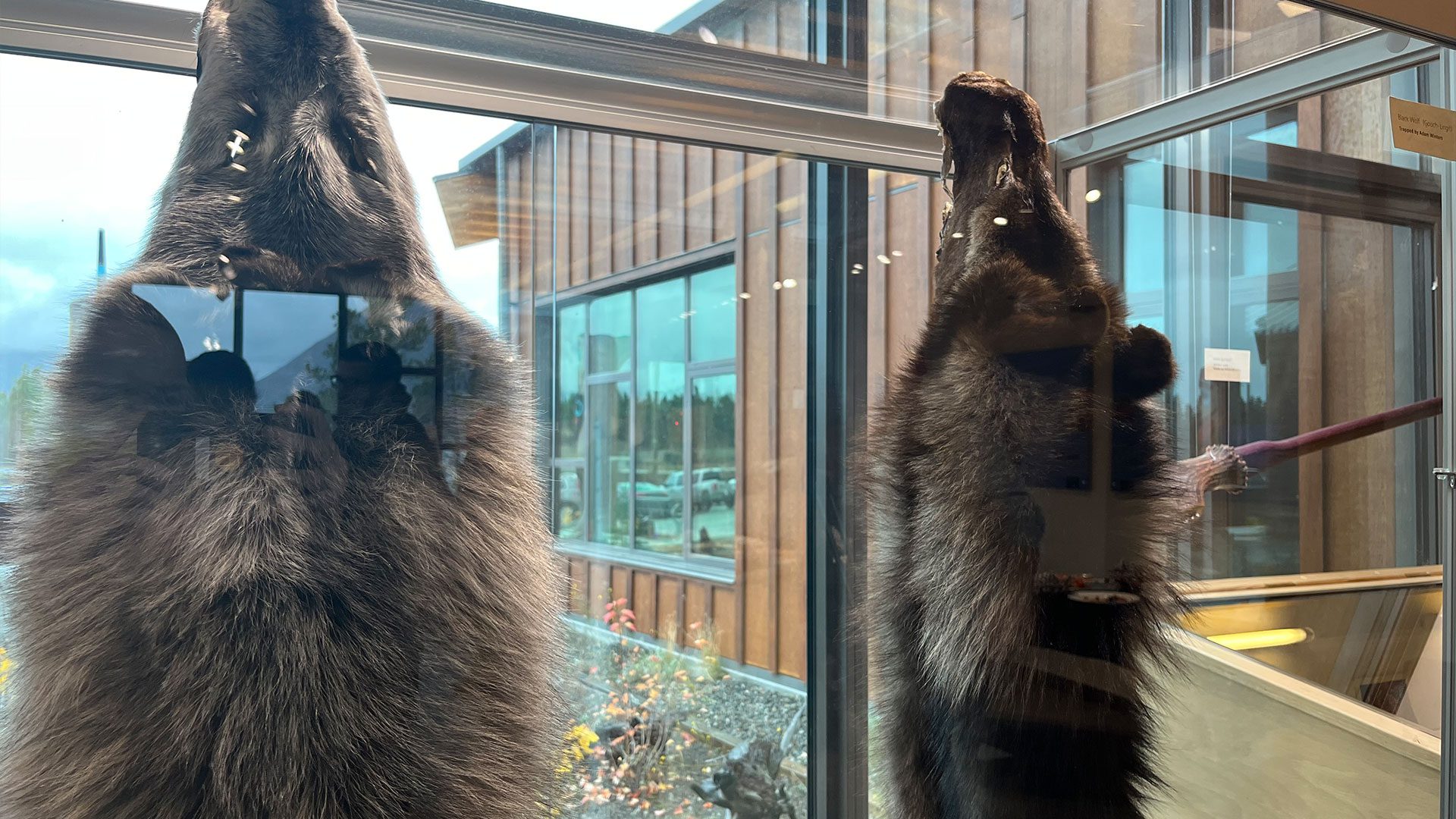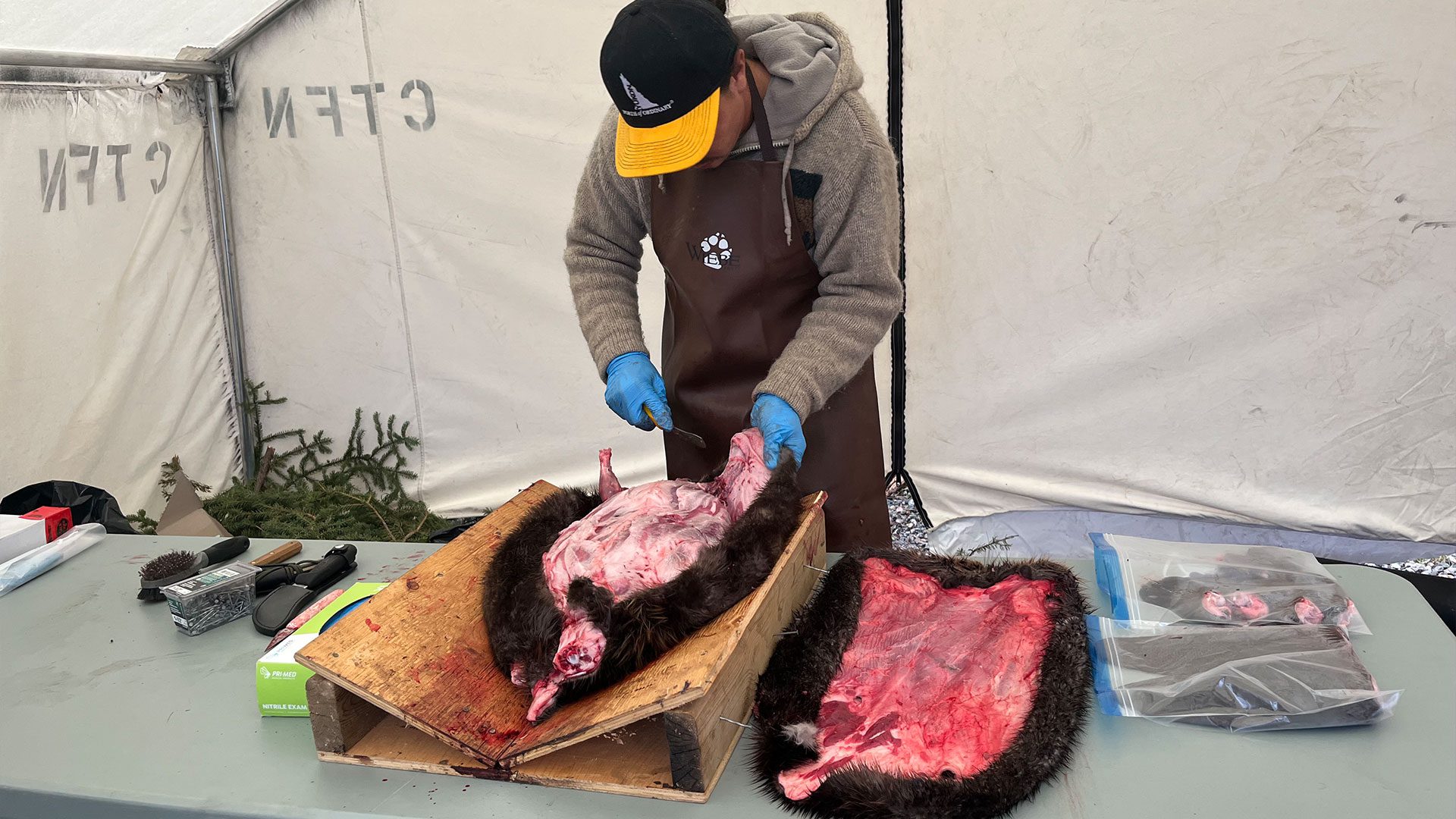A new exhibit by the Carcross/Tagish First Nation is celebrating its people’s rich trapping heritage.
Haa G̱aatáa Haa Ḵusteeyí – Our Trapping Our Way of Life, kicked off Oct. 18 at the Haa Shagóon Hídi multicultural centre in Carcross, around 70 km south of Whitehorse.
The multi-media exhibit features furs and hides, traditional and modern traps and tools, photographs, fur-fashion, regalia and ancient trapping and sewing tools uncovered in the territory’s ice fields.
“It’s not just about trapping animals, it’s not just about making things out of animal fur,” said curator Sandra Storey. “It’s about the rhythm of nature following the seasons, living off the land responsibly and efficiently and creating beautiful things in the form of the tools that are thousands of years old.”
A cultural practise dating back thousands of years, trapping was vital for the survival of First Nation’s people.
Animals like beaver, muskrat, marten, wolves, marmots, ground squirrels and rabbits were commonly trapped for food, clothing, tools and trade.
C/TFN knowledge keeper Colleen James addressed the spiritual importance of trapping in an opening prayer.

“We kept ourselves warm and survived good in this country,” she said. “There was always this respectful relationship with the land and water that sustained and provided the food for us all the time.”
Many items in the collection were borrowed or donated from Carcross/Tagish citizens and community members.
That includes a coat made of 40 gopher hides.
“It’s so old and fragile you need three or four people to put it together,” Storey said. “It has a spirituality that you just can’t deny when you’re looking at it.”
Items in the collection showcase likewise showcase First Nation’s people’s cultural connection to trapping, such as beaver pelts stretched and tied in the traditional way to ensure their shape remains flat.
Other items, like a series of more modern metal snares and traps, detail how non-Indigenous settlers in the region influenced trapping.
Storey said colonization forever changed trapping in the territory.
Read more:
Young people taking to the land to learn the finer points of trapping in Alberta
Inmates learn the ins and outs of trapping, skinning a pelt in North Slave jail
“The colonists wanted them to live in a particular place. They didn’t want them to be all over the land,” she said. “They created boundaries, political boundaries, physical boundaries, regulations and imposed on what was already a well-working system. There was a lot of struggle there.”
While trapping is no longer practised to the degree it was once was, the tradition lives on.
The opening-day of the exhibition also included a fur-processing demonstration led by Carcross/Tagish trapper Niko Helm.
“I heard somebody mention this is kind of a ‘lost tradition,’” he said.
“If you talk to a lot of trappers, they say it’s more of a way of life now, like a hobby. It’s not the same as back in the day where this was…I think it’s changed in that way,” he said.

Helm, who learned to hunt and trap from his family, said its important younger generations continue the practise.
“It’s something that’s being passed down and needs to be revived…It’s a part of our life for sure,” he said.
The exhibition will wrap up just before Christmas with a fur fashion show.
Storey hopes the exhibit will inspire visitors to think more about the lives of the territory’s original people.
“We want to have an exhibition that shows people their history, their own history – not what’s been put out there since colonization -but to celebrate their history first and foremost.”









